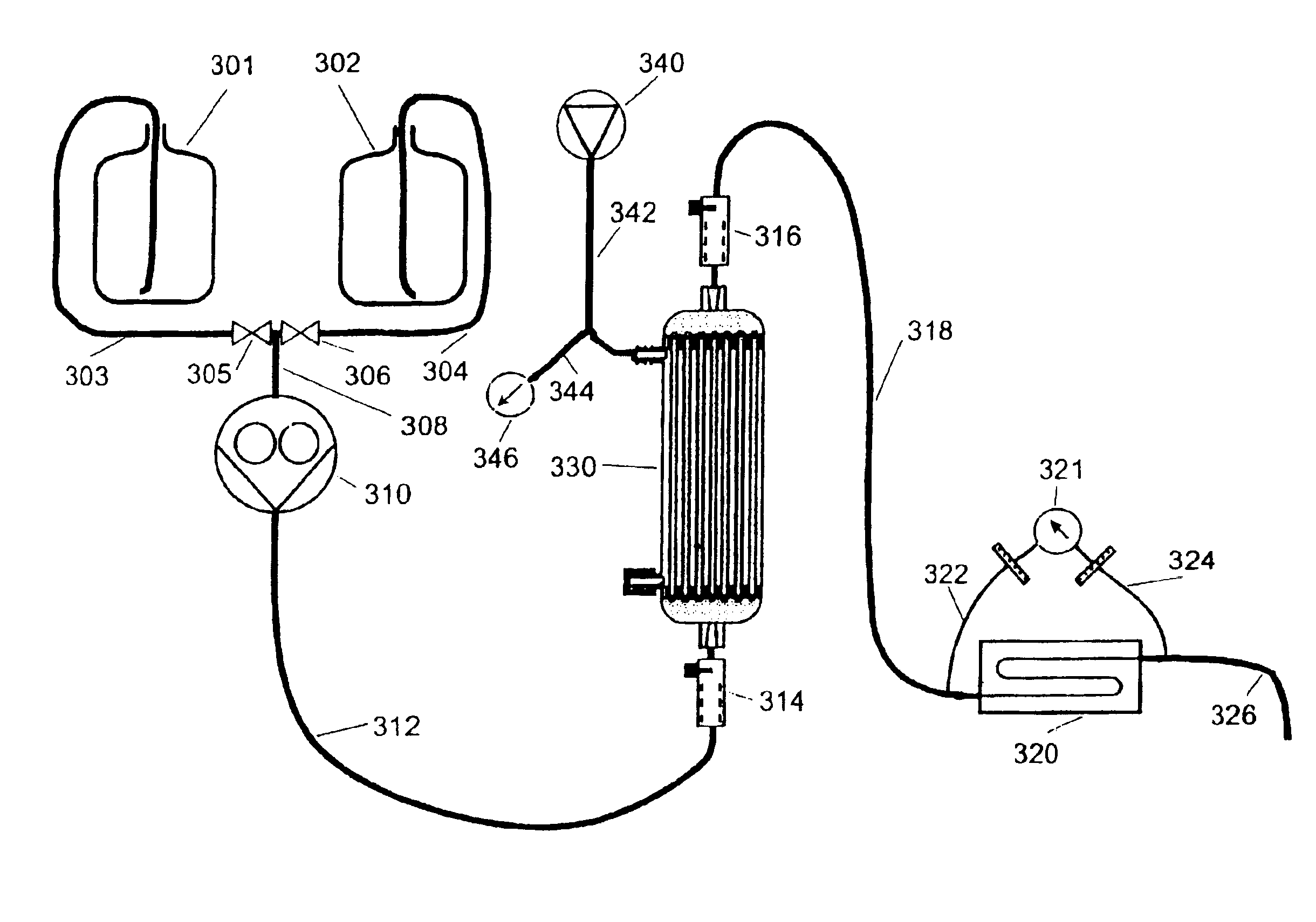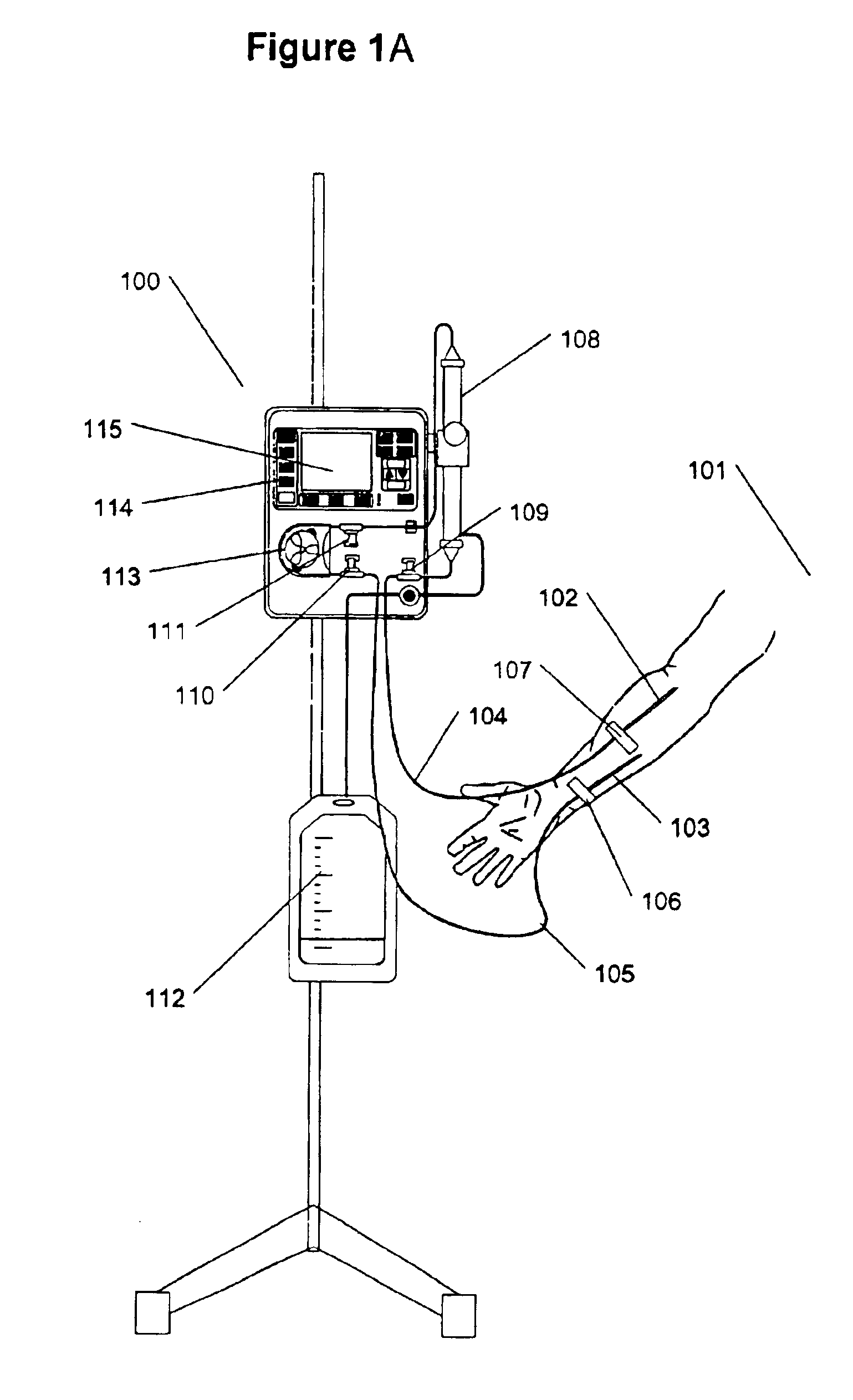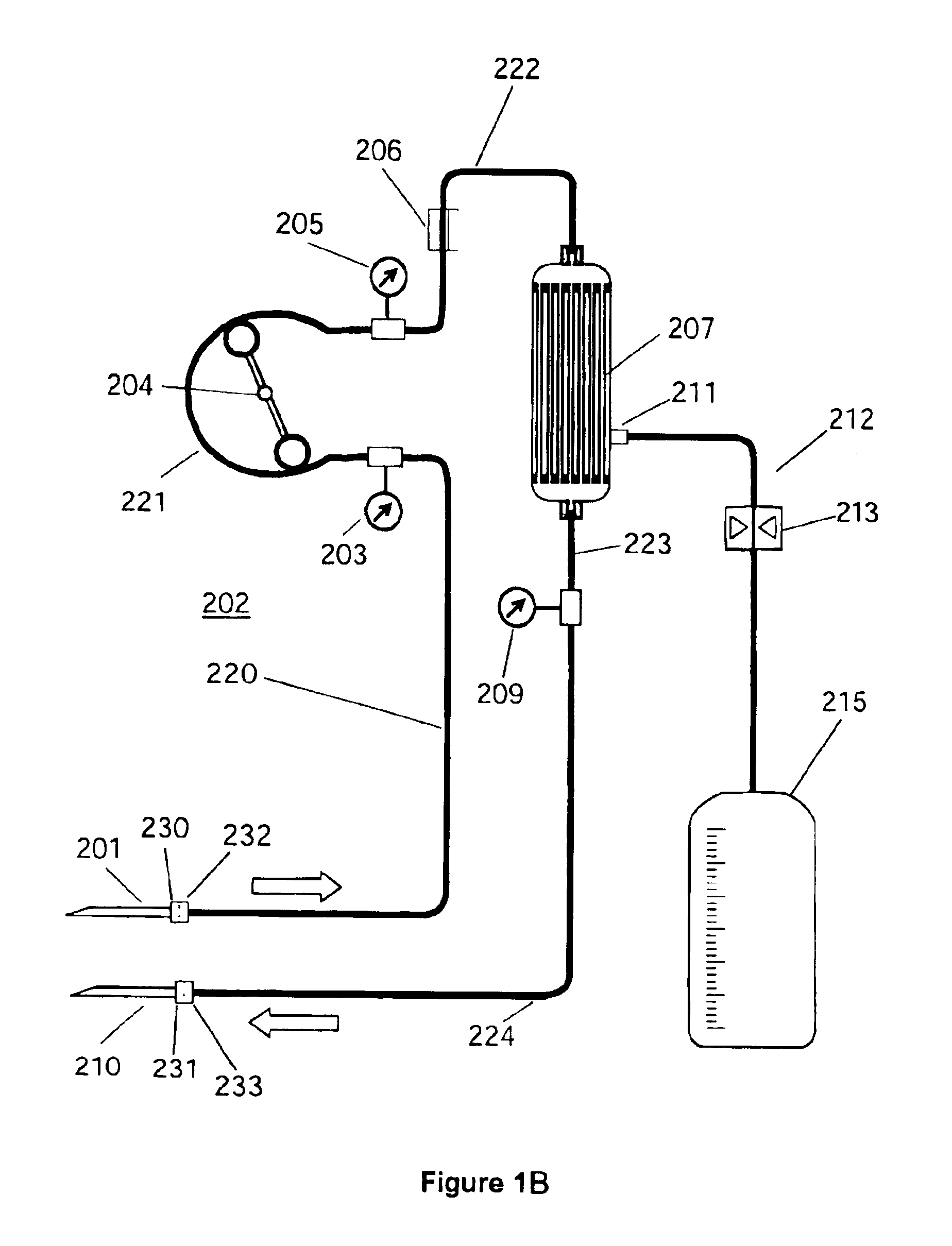Extracorporeal circuit for peripheral vein fluid removal
a technology of peripheral veins and extracorporeal circuits, which is applied in the direction of suction devices, catheters, other medical devices, etc., can solve the problems of increased blood vessel constriction, fluid retention, abnormal hormone secretion, etc., and achieve the effect of removing the effect of the time course of input conductivity/concentration
- Summary
- Abstract
- Description
- Claims
- Application Information
AI Technical Summary
Benefits of technology
Problems solved by technology
Method used
Image
Examples
Embodiment Construction
[0021]FIG. 1A illustrates the treatment of a fluid overloaded patient with a blood treatment system 100. Patient 101 can undergo treatment while in bed or sitting in a chair. Patient can be conscious or asleep. To initiate treatment two relatively standard 18G needles 102 and 103 are introduced into suitable peripheral veins (on the same or different arms) for the withdrawal and return of the blood. This procedure is no different from blood draw or IV therapy. Needles and attached to tubing 104 and 105 and secured to skin with attachments 106 and 107. The blood circuit that consists of the blood filter 108, tubes, pressure sensors 109, 110 and 111 and the ultrafiltrate collection bag 112. The circuit is supplied in one sterile package and is never reused. It is easy to mount on the pump 113 and can be primed and prepared ready for operation within minutes by one person.
[0022]During operation, the present invention requires minimal intervention from user. User sets the maximum rate a...
PUM
 Login to View More
Login to View More Abstract
Description
Claims
Application Information
 Login to View More
Login to View More - R&D
- Intellectual Property
- Life Sciences
- Materials
- Tech Scout
- Unparalleled Data Quality
- Higher Quality Content
- 60% Fewer Hallucinations
Browse by: Latest US Patents, China's latest patents, Technical Efficacy Thesaurus, Application Domain, Technology Topic, Popular Technical Reports.
© 2025 PatSnap. All rights reserved.Legal|Privacy policy|Modern Slavery Act Transparency Statement|Sitemap|About US| Contact US: help@patsnap.com



